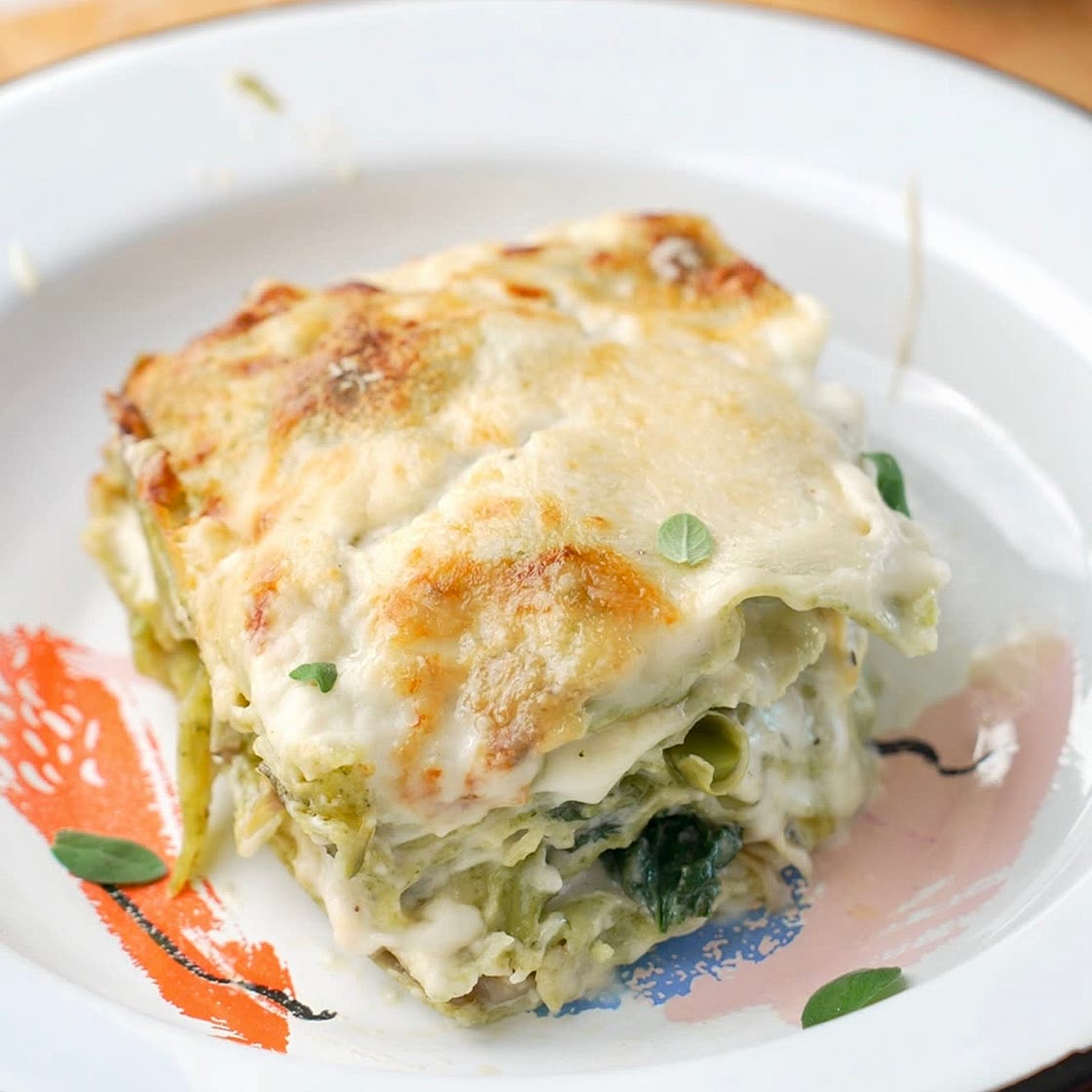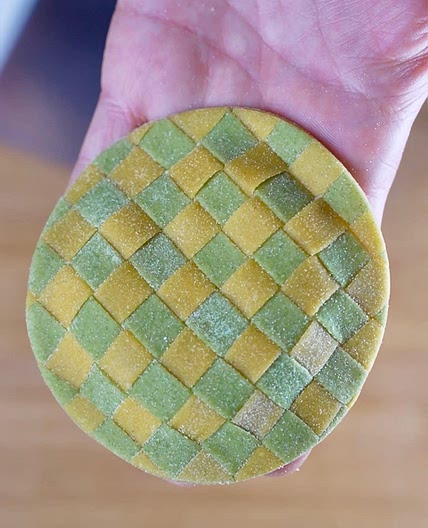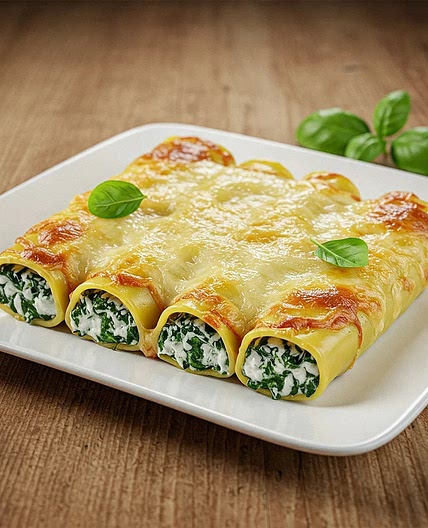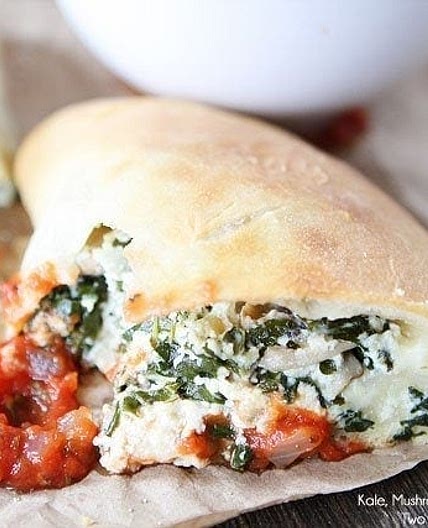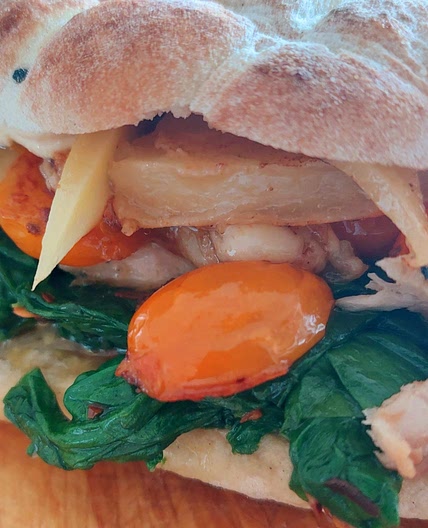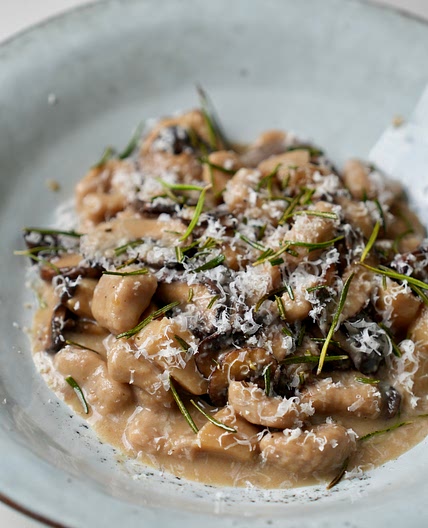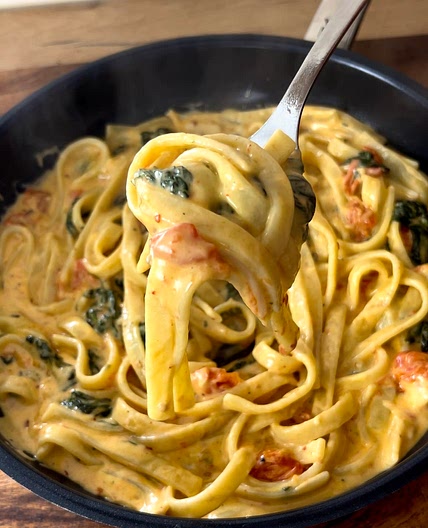Vegetarian Lasagna
21 steps
Prep:2h
I am a big fan of any pasta that is baked, for me it always bring back memories of Sunday family lunches when Nonna used to prepare her pasta al forno for us.
With that in mind, it goes without saying that I am a big lasagne lover, my wife is in fact from Emilia Romagna so we often have lasagne when we visit the in-laws. Now let me ask you, what’s the best part of a lasagne? Opinions differs but if you ask me, the answer is the crusty parts on the top and corners, with still a bit of cheese and bechamel underneath…delicious!
As every lasagna is a labour of love, preparation is key. Get your ingredients and tools ready, plan ahead and take your time.
Chef’s tip: When the pasta is fresh and just made, I like to use raw pasta sheet directly as they are, in this way they will absorb more of the juices and flavours. Just make sure to keep the Grana Padano béchamel a little bit on the loose side by adding extra milk. If using store bought dry pasta sheets, boil them in salted water as usual before building the lasagne. Any pasta trimming can be re-used in soups or other dishes.
Updated at: Wed, 15 May 2024 17:34:14 GMT
Nutrition balance score
Good
Glycemic Index
58
Moderate
Glycemic Load
65
High
Nutrition per serving
Calories1218.8 kcal (61%)
Total Fat63.2 g (90%)
Carbs110.9 g (43%)
Sugars11.4 g (13%)
Protein54.8 g (110%)
Sodium2356 mg (118%)
Fiber12.5 g (45%)
% Daily Values based on a 2,000 calorie diet
Ingredients
6 servings
12artichokes
500 grcime di rapa
or other leafy greens
10mlwhite wine
4 Tbspolive oil
2shallots
2garlic cloves
150 grGrana Padano
Grated, to sprinkle
250 grgorgonzola
fresh herbs
of your choice
butter
to grease
salt
to taste
pepper
to taste
For the bechamel
1lmilk
warm, if possible
70gbutter
70gplain flour
300gGrana Padano
grated
nutmeg
A touch, to taste
salt
to taste
pepper
to taste
For the green pasta
Instructions
Step 1
For the pasta. Beat the eggs and spinach with a fork and gradually incorporate the flour. When the ingredients start to bind together, knead by hand with energy. Remember, during this step it is important to stretch and pull your dough while kneading to allow the flour’s gluten to start working and therefore obtain and elastic dough. After a few minutes, it will slowly come together and result in a smooth and homogeneous dough. As not all eggs are the same, if your dough feels too sticky, feel free to add a spoon of flour, if too dry and not binding, you can add a touch of leftover egg white or even a splash of water.
Step 2
When ready, wrap your dough in clingfilm and leave to rest for about 30 minutes, this will allow the dough to ‘relax’ and not be too elastic when shaping your pasta.
Step 3
Proceed to roll the dough into thin pasta sheets. If you have a wooden board great, if you don’t, a clean surface will work.
Step 4
First, slice the pasta into thick sheets and flatten them with a rolling pin. With the help of a pasta machine, roll the pasta out. (This can also be done by hand using a rolling pin and lots of elbow grease!).
Step 5
It is good practice to fold your rolled pasta on itself and start over a couple of times, this process will give you a smoother and rectangular sheet that will be easier to work with at a later stage.
Step 6
Pass the pasta gradually from the largest setting to the second to last.
Step 7
It is a good habit to allow your pasta sheets to dry for 5 minutes on your board before cutting it into any shape and remember to dust with extra flour only if it feels too wet and humid on your hands.
Step 8
I also always re-roll the pasta sheet on the same setting once after the 5 minutes rest to make sure it has not shrunk too much.
Step 9
I like my lasagne sheets about 1,5 mm thick.
Step 10
Remember, cut your pasta sheets accordingly to the size and shape of your baking tray to avoid excessive waste and if you are making your lasagne straight away keep your sheets between parchment and you can use them raw. If you are using dry pasta sheet make sure to cook them before hand in salted boiling water, drain them and pat dry before building the lasagne.
Step 11
To prepare the béchamel. Melt the butter in a saucepan and add in the flour. Cook for a couple of minutes while stirring, on a medium heat until the roux (mix of butter and flour) is golden. Then slowly pour in the milk and bring to the boil, while whisking vigorously, to avoid any lumps. Boil for 2 minutes and then remove from the heat. The béchamel should be now ready and creamy. Stir in the grated Grana Padano cheese, until smooth. Season carefully with salt (as the cheese will have already made the béchamel tasty) and a little black pepper and grated nutmeg. Set aside.
Step 12
Now prep the vegs. Trim the stalks of the artichokes leaving about 2 cm intact. Remove the outer leaves until you find paler and tender leaves. Now with a paring knife, trim the side of the chokes where you removed the leaves and peel the part of the stalk still attached to smoothened it out. Now cut the artichokes in half and remove the fuzzy choke from the centre. If you are planning on making lots of artichokes, you can soak them in cold water with lemon juice until you are ready to cook them.
Step 13
Slice the artichokes thinly and fry them in a large pan with the olive oil, the chopped shallot and a sprig of marjoram or other herb of your choice. Cook on high heat for about 3 minutes, deglaze with the wine and cover with a lid. Cook until soft and cooked through. Season to taste and keep aside.
Step 14
Trim and blanch the leafy greens in salted boiling water and flavoured it by simply stir fry it quickly with olive oil and garlic for 2 minutes. Season to taste.
Step 15
To build the lasagna. Either grease your chosen tray well with butter or line it with baking parchment.
Step 16
Build the lasagna in layers, alternating pasta sheets with the bechamel, the cooked artichokes and veg a good sprinkle of Grana Padano and a few dollops of gorgonzola cheese. Repeat the operation until you have either reached the top of the tray or finished the ingredients.
Step 17
Remember, just made fresh pasta can be used raw for lasagne while store bought dry sheets are best if boiled first.
Step 18
Cover the top layer with bechamel and a few dollops of gorgonzola before baking it.
Step 19
Bake at 160 for about 45 minute and to create steam inside your over add a tray or pan with water on the bottom. This will speed up the cooking time.
Step 20
The lasagna should be slightly firm to the touch and well golden on the top.
Step 21
Remove from the over, sprinkle with extra cheese and let it set a few minutes before serving.
Notes
1 liked
0 disliked
Delicious
Go-to
One-dish
There are no notes yet. Be the first to share your experience!
